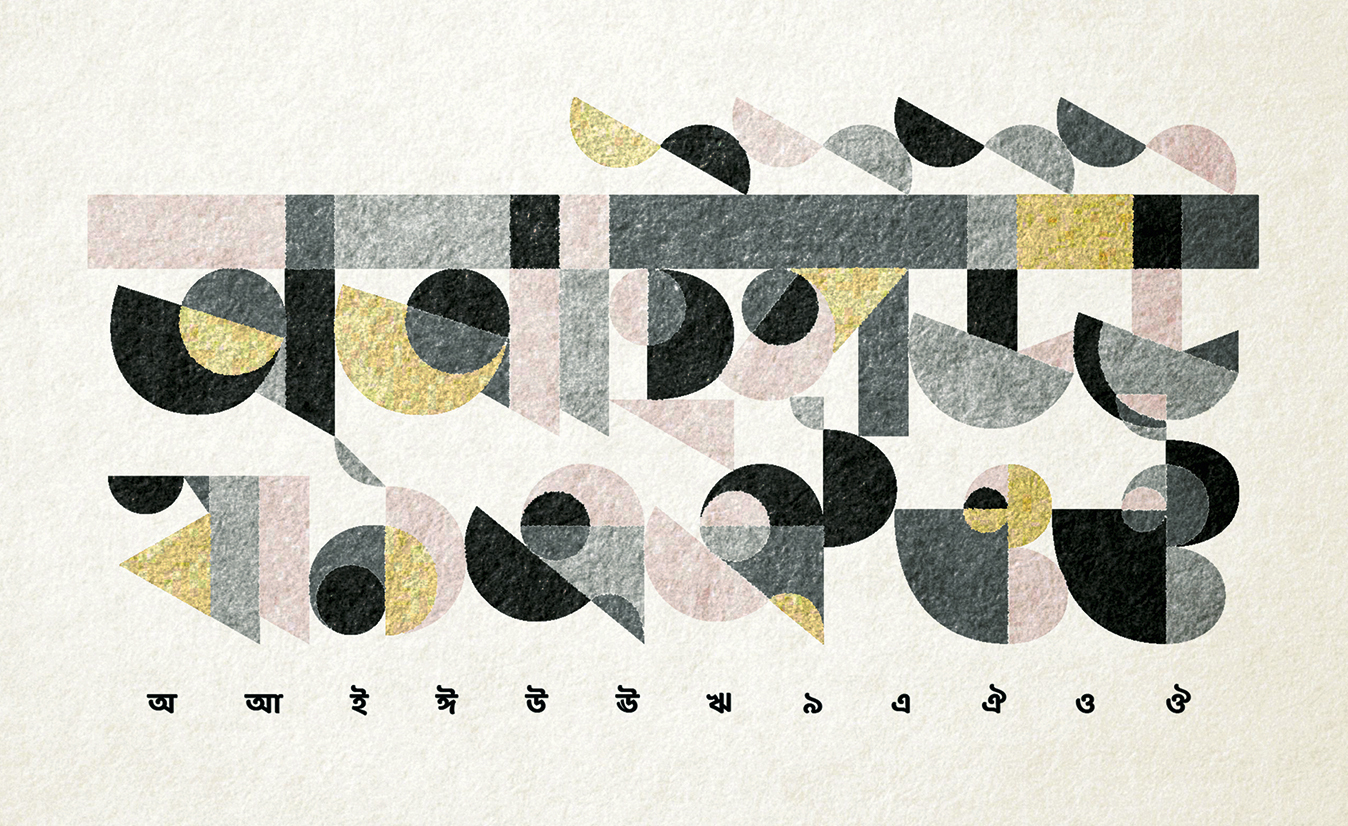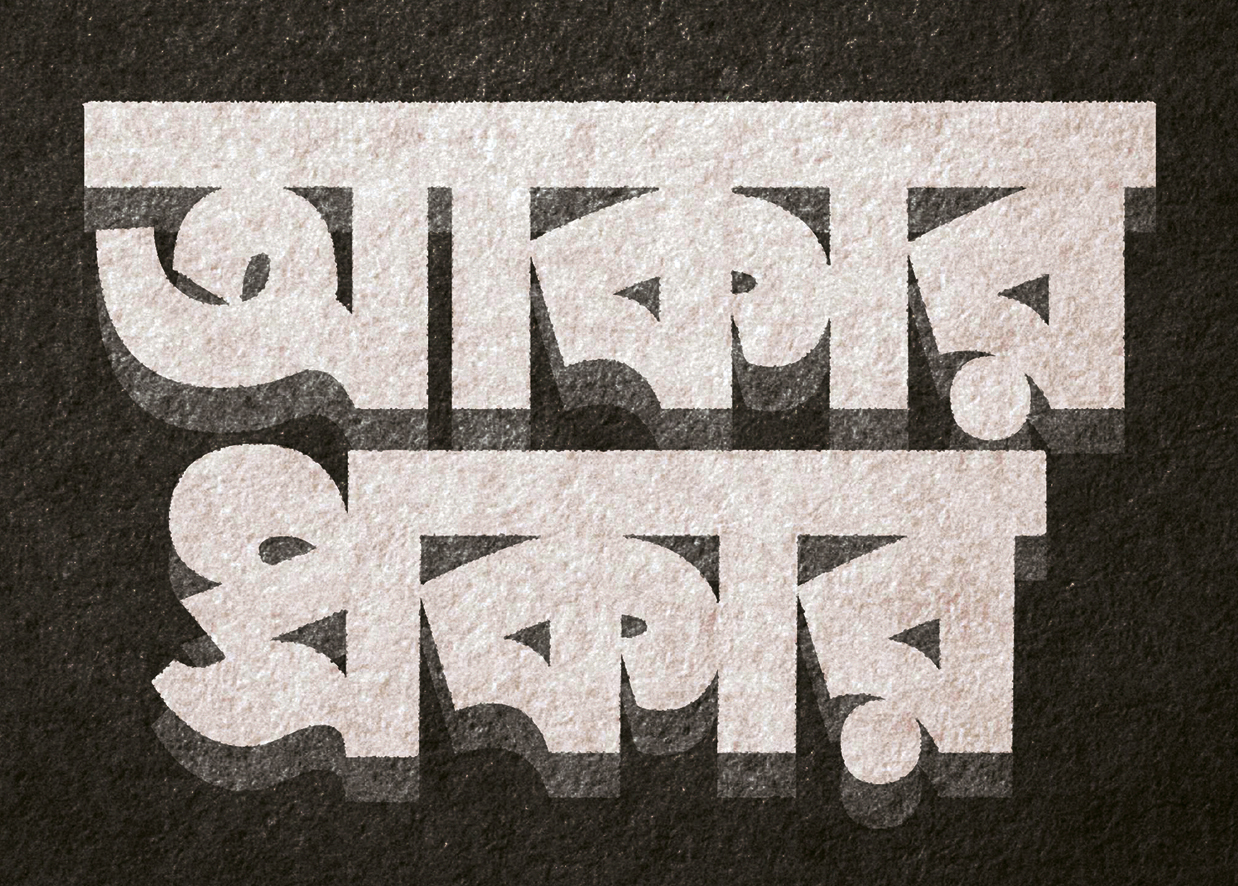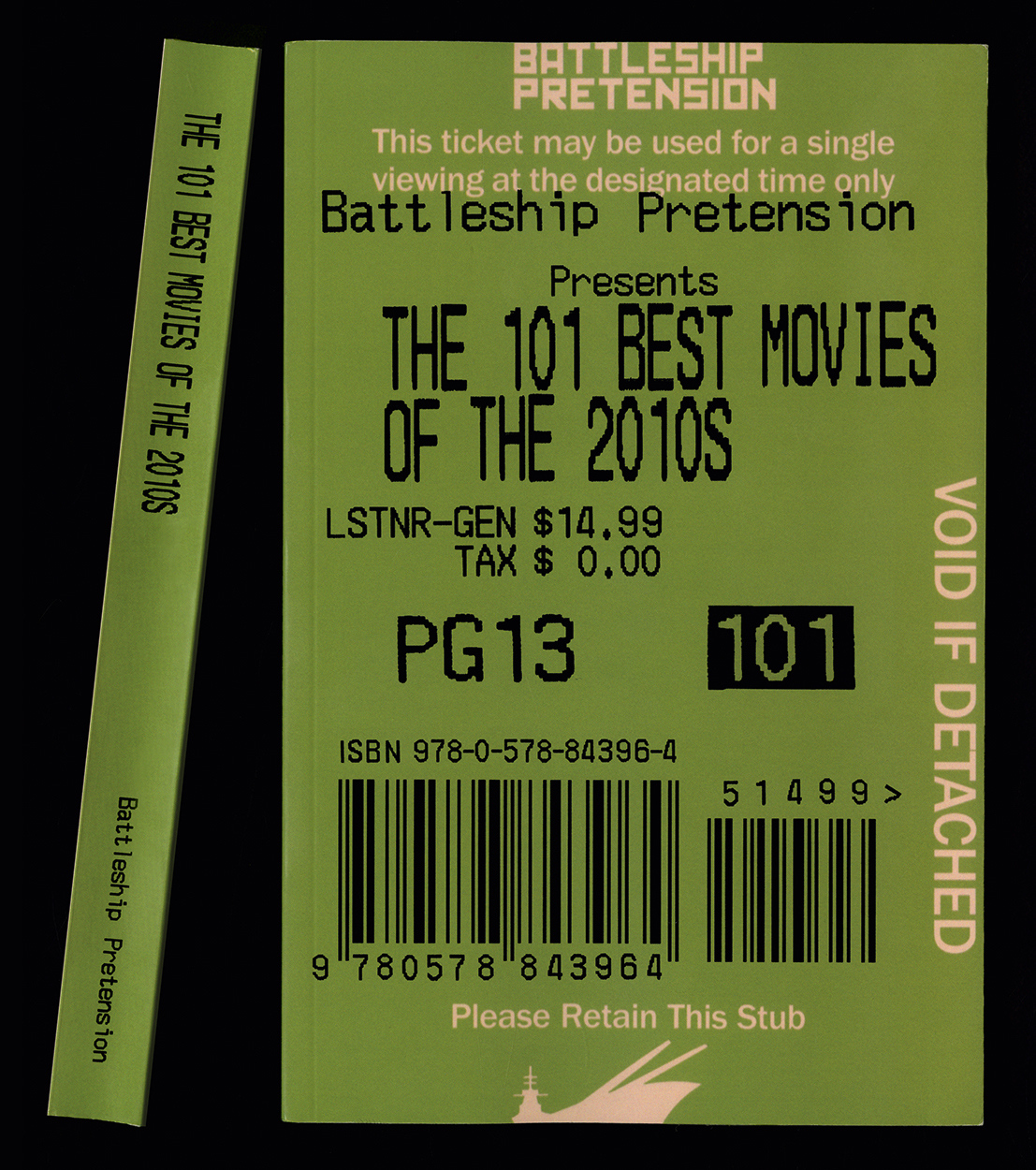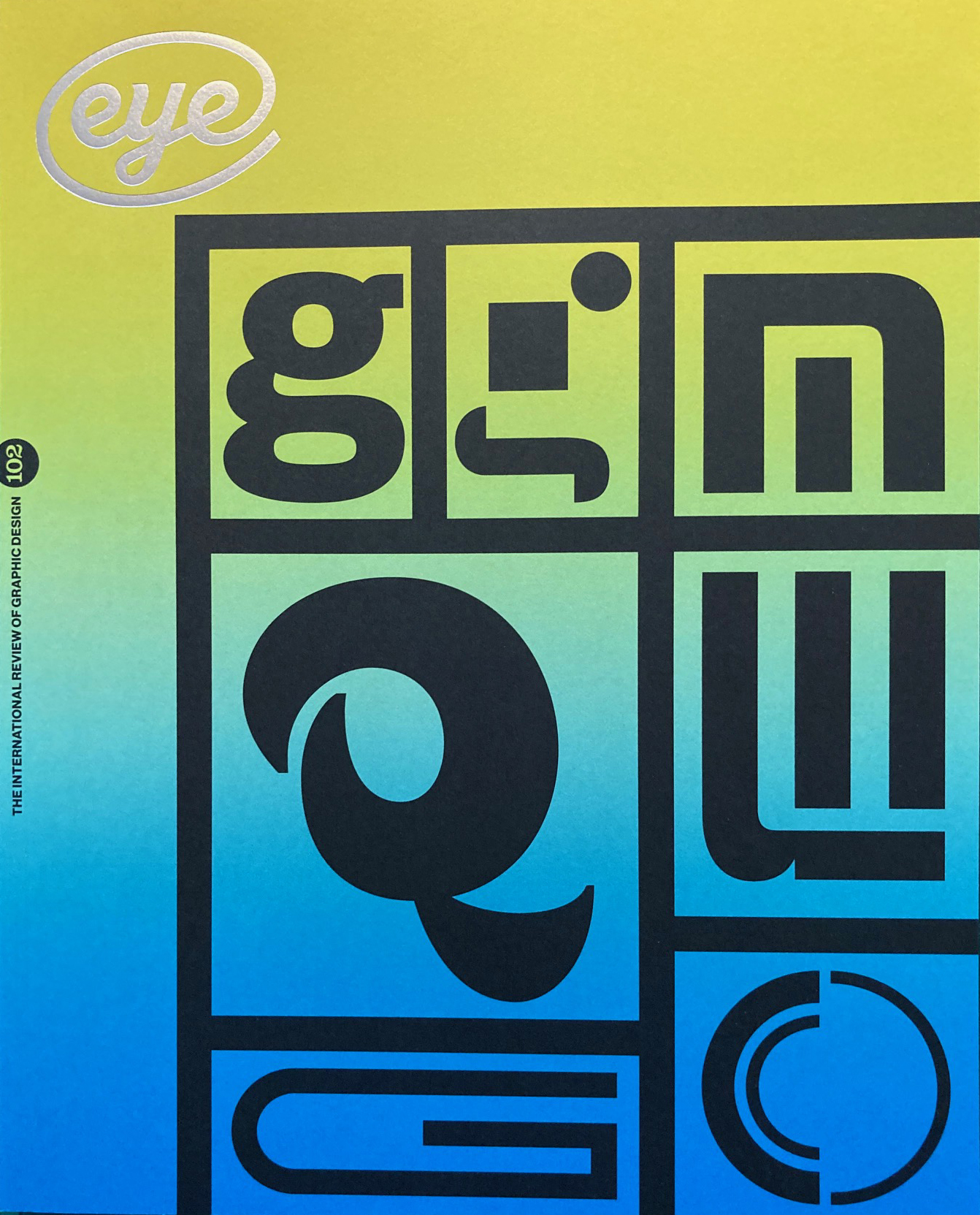Autumn 2021
Typographics 21: Session 2
3 June 2021. Shiva Nallaperumal, host.
Charu Pragya and Aarman Roy, Akademi
‘Artists as Purveyors of News’Sulekha Rajkumar
‘Text as Image: Studying Bangla (Bengali) lettering traditions through practice’Ananya Khaitan
‘The Endless Joys of Literalness’
Hosted gracefully by November’s Shiva Nallaperumal (see ‘Design for a better world’ in Eye 102), this session touched on type’s radical capabilities as well as its artistic potential, offering a look into the historical and contemporary significance of Indian typography.
First to speak were Goa-based Charu Pragya and NYC-residing Aarman Roy, founders of indie publication Akademi. Aiming to carve out a safe space for writing that ‘might not be able to find a home elsewhere’, the duo hold both critical engagement and communication design close to their hearts. Roy and Pragya wear many hats – he studies at the School of Visual Arts, interns at Apple, and handles the magazine’s design and art direction, while she labels herself a ‘writer, editor and reluctant academic’. Pragya highlighted the context from which their project grew, amid the largest protests in human history. While Akademi quickly gained an audience enraptured by its slick yet pensive social media graphics, which were used to reel readers into long-format articles, the team were quick to critique themselves, stating that in the future, they want to leave things ‘undesigned’. The audience reflected with them – does exciting design amplify or inhibit the critical thought it is trying to communicate?
From Sulekha Rajkumar’s ‘Aakar Prakar’ series of Bengali lettering experiments that explore the materiality of tools (2020-21). Top. The complex forms of Bengali vowels are simplified and redesigned via basic geometric shapes and ‘odd proportions’ by Sulekha Rajkumar (2017).

If Akademi pursued the politics of type design, Sulekha Rajkumar highlighted the historical aspects of Indian letterforms. Her practice is centred around the Bengali-Assamese script, which is known to over 250 million speakers across the Indian subcontinent and resides as a ‘living tradition’ through street art, film posters and album covers. In a presentation that referenced the filmmaker and designer Satyajit Ray and artist Nandalal Bose, Rajkumar showcased some exquisite examples of typographic abstraction.
Cover of Battleship Pretension Presents: The 101 Best Movies of the 2010s designed by Ananya Khaitan (India).

The event was concluded by designer Ananya Khaitan, whose witty personality surfaced through designerly details. ‘Awaaz’, an exhibition where Khaitan was commissioned to design an identity centred around the voice, sound and noise of revolution, had cultural impact in its nod to the ‘oppressive regime’ dominating India’s politics. However the cheeky specifics of Battleship Pretension Presents: The 101 Best Movies of the 2010s charmed the audience. Noting the dramatic principle of ‘Chekhov’s gun’, Khaitan had a brainwave: an illustration of a gun firing earlier in the publication was subtly echoed in later pages, where a letter was knocked over to visualise the bullet’s effect. Such minutiae encapsulated the essence of the event and the discipline of type design itself.
Anoushka Khandwala, designer, writer, educator, London
First published in Eye no. 102 vol. 26, 2021
Eye is the world’s most beautiful and collectable graphic design journal, published for professional designers, students and anyone interested in critical, informed writing about graphic design and visual culture. It is available from all good design bookshops and online at the Eye shop, where you can buy subscriptions and single issues.

